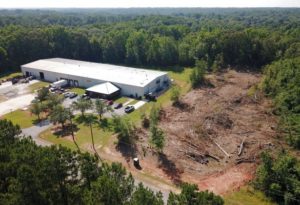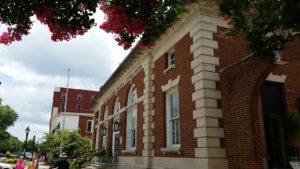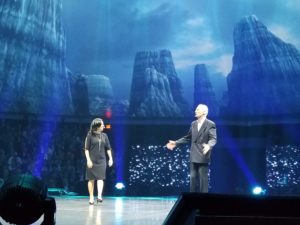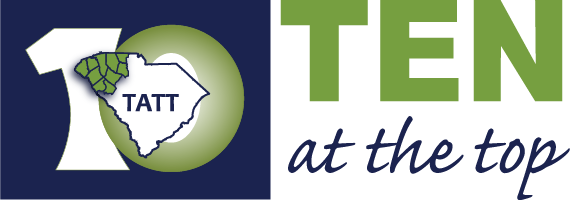
Jun 25, 2018 | Staying on Top
Greenwood County Celebrates Growing Economy
By Adelyn Nottingham
Located in the Upper Savannah region of Upstate South Carolina sits Greenwood, South Carolina. Greenwood is one hour south of Greenville, SC and one hour north of Augusta, GA. As our Upstate region continues to flourish economically, places like Greenwood are beginning to expand industries and jobs. These expansions affect the communities in a positive manner and create an atmosphere for continued growth in Greenwood.

On Wednesday June 20, 2018, Monti, Inc., a leading industrial manufacturer, fabricator, and specialized processer of electrical components announced plans to expand existing Greenwood County operations. According to the SC Department of Commerce, the company projects that this $2.7 million investment is projected to create 19 new jobs. They are also adding 20,000 square feet to the existing facility, located at 104 Airport Industrial Park in Greenwood.
Monti, Inc. produces a wide range of electrical industry components, including insulators, conductors, and steel parts. The company is headquartered in Cincinnati, Ohio and also has manufacturing facilities in Sumter, South Carolina and Riverview, Michigan.
“We’re proud to celebrate anytime a company decides to strengthen its commitment to our state and its people. This is a milestone for Monti, Inc. and Greenwood County, and I’m excited to see such a strong partnership continue to thrive moving forward,” stated Governor Henry McMaster in a recent press release from the South Carolina Department of Commerce.

The continued expansion of Monti, Inc. is considered a major economic win for Greenwood and our region; however, Monti, Inc.is not the only company thriving and expanding in the county. Early this year, Van Dyke’s Restorers, Inc. expanded their operations, further stimulating economic growth within the county. The company is projected to create 31 new jobs over the next five years. Van Dyke’s Restorers offers a broad selection of products designed to serve everyone from the inexperienced remodeler to professional architects and woodworkers. The wide assortment of more than 70,000 items includes everything required for a Victorian, midcentury, traditional, or transitional home restoration (SC Dept. of Commerce, 2018).
Greenwood County Council Chairman Steve Brown made the following comments about the expansion in a SC Dept. of Commerce news article this past February:
“Greenwood County is excited to see Van Dyke’s Restorers, Inc. expand as they make this new investment and create jobs within our community. Their strong product offerings continue to grow, which is great news for our county and our state.”
The expansion of both Monti. Inc. and Van Dyke’s Restorer’s Inc. demonstrates that Greenwood is becoming a major player in the production industry. This economic climate has attracted new industries to the area and led to even more economic growth. Teijin Limited celebrated the ground breaking of their new carbon-fiber production facility of its wholly owned subsidiary Teijin Carbon Fibers, Inc., located on highway 246 South in Greenwood in the beginning of June 2018.
The TCF facility is expected to create around 220 jobs with $600 million worth of investment around the year 2030. This is noted to be the largest initial capital investment that the company has ever created in Greenwood (Partnership Alliance Greenwood, 2018).
So what does industry expansion and industry creation mean for Greenwood? It means that the overall quality of life will improve for those residing in the county. These expansions lead to more opportunities for community members and set the stage for Greenwood to be an ideal destination to live and flourish. Greenwood is working actively to diversify its economy and become a place where all community members have equal opportunities at achieving success. 
Along with expanding industries and job creation, Greenwood is also home to many community assets, including:
These community assets help encourage existing and new industries to view the county as a place where employees can thrive throughout their lifetime. As industries expand and new job are created, these community assets will play an important role on the success of the economy. All in all, Greenwood is becoming a great place to live, work, and play.
Sources:
Dorn, M. (2018, June,5). Teijin Breaks Ground for Carbon Fiber Facility in Greenwood South Carolina. In South Carolina Department of Commerce
Van Dyke’s Restorers, Inc. Expanding Greenwood County Operations (2018, February, 7). In South Carolina Department of Commerce
MONTI, INC. EXPANDING GREENWOOD COUNTY MANUFACTURING OPERATIONS (2018, June 20). In South Carolina Department of Commerce. Retrieved June 25, 2018.
![Tackling Transportation from a Regional Perspective]()
Jun 18, 2018 | Staying on Top
By Sue Schneider, Board Chair, Ten at the Top
Over the past year, leaders from across the region have recognized the need for a shared and clear vision for transportation and mobility in the Upstate. We are guided by a basic question: How can we work together to create a vibrant and connected region, where transportation policy and investments promote innovation, sustainable development, and economic prosperity for all residents and businesses?
In our quest for answer, we are guided by a new initiative: Connecting Our Future.
This is more than a series of meetings and presentations: It’s an opportunity to view the future through a shared lens—one that allows us to see the many challenges and opportunities on the horizon. As this region continues to grow together, we all recognize the importance of how we embrace new develop in the context of transportation and mobility.
Connecting Our Future is resulting in the creation of a regional vision for transportation, mobility, and connectivity the Upstate. An advisory committee comprised of stakeholders representing education, transit systems, local governments, economic development organizations, health care, conservation groups and businesses have been working to develop the regional vision and actionable strategies for how we can work collaboratively to advance transportation, mobility and connectivity in the region.
I’ve said many times that transportation is an equalizer and levels the playing ground for everyone; it can also mean the delivery of an economic advantage that provides us lift-off—the rocket fuel to propel more jobs and us to new investment. This will help us create a region that can move people, goods and services while maintaining—and enhancing—our collective quality of life.
Connecting Our Future is allowing us to look at six themes of mobility:
- Travel Options: Invest in and incentivize active transportation and mobility networks to prepare for continued growth and maintain regional competitiveness.
- Access to Opportunity: Connect people to opportunity—including jobs, resources, education, and healthcare—to improve economic mobility.
- Sustainable Growth: Promote land use decisions that support greater mobility and is environmentally sensitive, economically viable, community-oriented, and sustainable over time.
- Enhanced Livability: Protect the individual identities of communities through improvements to the built environment, more transportation options, and attractive business investment.
- Economic Vitality: Maximize the efficient movement of people and freight within and through the region to grow the Upstate’s economy.
- Health and Safety: Promote mobility choices that position future generations for a safe environment and healthy lifestyles.
These themes emerged during an early meeting of the Connecting Our Future Advisory Team and will help communicate the need for a regional mobility and connectivity strategy as well as help organize performance measures that assess the overall progress toward achieving the vision. We also had an Idea Exchange, with more than 100 stakeholders working together to brainstorm ways to enhance mobility. In total, attendees identified more than 300 actions and 70 priorities through small group discussion. Those actions will continue to be refined throughout the process and leading up to the public rollout.
Certainly, vision is important. But we must act upon what we see, and recognize that a strategy is only the beginning step in a long—and exciting—journey that we’ll all take together. It is absolutely critical that we work together as a region to enable the development of structures, policies and investments that can help us move from vision to reality.
But what’s the bottom line? We need you on board, so please consider attending the public rollout of Connecting Our Future.
August 7th 11:30 a.m. – 1:30 p.m.
TD Convention Center
1 Exposition Drive
Greenville, SC 29607
Register Here!
Thank you for going on this journey with us. The destination will be a future that we can all say we had a hand in shaping. Together.

Jun 1, 2018 | Staying on Top
By Dean Hybl, Executive Director, Ten at the Top
While increased traffic congestion around our primary transportation corridors and lack of access to transportation for some Upstate employees have become growing concerns in our region in recent years, the reality is that other regions across the nation and globe have been dealing with similar challenges for many years and decades.
I was fortunate to be among a number of Upstate leaders who participated in the recent Movin’On Mobility Summit hosted by Michelin in Montreal.
Billed as the World Summit on Sustainable Mobility, more than 4,000 people from across the globe participated in the conference with the goal of bringing global, smart, sustainable and multimodal mobility to life.
It is perhaps natural to think that other places have all the answers and that we are behind when it comes to addressing our transportation and mobility challenges in the Upstate. However, while there are communities doing amazing, cutting-edge initiatives, one of my interesting takeaways from the conference was that no city or region has come up with all the answers. In fact, regions across the globe are scrambling to figure out how to connect local mobility and transportation needs with dramatic innovations in technology and a global desire to improve sustainability and mitigate impacts to the environment.
While the general theme of the conference focused around innovation and technology, many of the speakers spent as much time talking about the importance of creating a community culture that can enable success. Building a vision for what you want to accomplish and then collaborative partnerships with everyone who can play a role, even though many of those players may technically be competitors, was an underlying theme spoken over and over by presenters from all over the globe.
“Collaboration between the public and private sector is the key to the future,” said Michelin CEO Jean-Dominique Senard in the conference opening.

Adam Blinick, the Director of Public Policy and Communications for Uber Canada said that “you need a vision of where you want to go first. Technology shouldn’t be the end.”
Blinick added that “a joint vision is not a technical challenge, it is a collaborative challenge. You have to bring together all the transportation modes that play a role in mobility and work together to accelerate the trends we are already seeing.”
Joanna Kerr, Executive Director of Green Peace Canada, moderated a panel about creating an inclusive transformation and said that “collaboration is becoming increasingly important in helping meet our mobility needs.”
Given that stakeholders from across the Upstate region have been spending much of the last year working to develop a transportation vision, actionable strategies and a framework for continuing to build and grow collaborative partnerships through the Connecting Our Future initiative, you can certainly say that the Movin’On conference affirmed that approach.
However, it is also very clear that we cannot stop just simply with creating a regional mobility vision. For the Upstate to tangibly address our growing challenges around mobility and transportation, we must take the next step and continuing building the partnerships and “community will” needed to turn vision into action.
Sampo Hietanen, Founder & CEO of MaaS Global in Helsinki talked about creating a dream for people that goes beyond simply owning a vehicle, but gives them aspirations about how having multiple mobility choices can positively impact their life. He also said that to create sustainability you have to focus not just on projects, but on enabling the market that will then allow for the cultivation of projects.

In an Upstate region where 94% of all residents use a personal vehicle to get to work and our investment in public transportation is near the bottom of most rankings, our solutions are going to be different than in some other parts of the country and world. Yet, if we can cast a compelling vision for how multiple mobility solutions can positively impact the quality of life for all Upstate residents, over time we can create a future that enables greater mobility.
What we must do in the Upstate is continue to grow a coalition of partners and stakeholders who are committed to supporting and prioritizing the multiple projects and solutions needed to impact how we move people and goods across the Upstate. As was said multiple times by speakers at the conference, there is no one “silver bullet” to fix transpiration and mobility in a community and having the right partners at the table to enable change will be crucial.
I invite you to join us for the unveiling of the regional vision and actionable strategies and the start of the discussion on “next steps” during a regional event on August 7th from 11:30 am-1:30 pm at the TD Convention Center. This event is open to the public and you can register to attend at www.connectingourfutureupstatesc.org.








